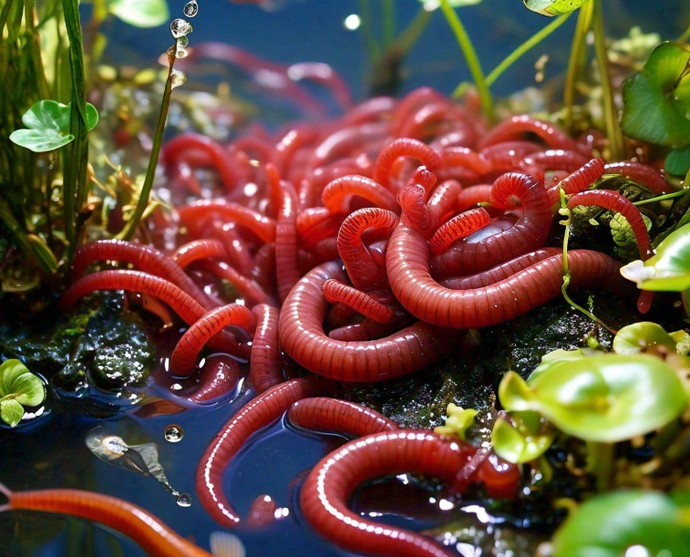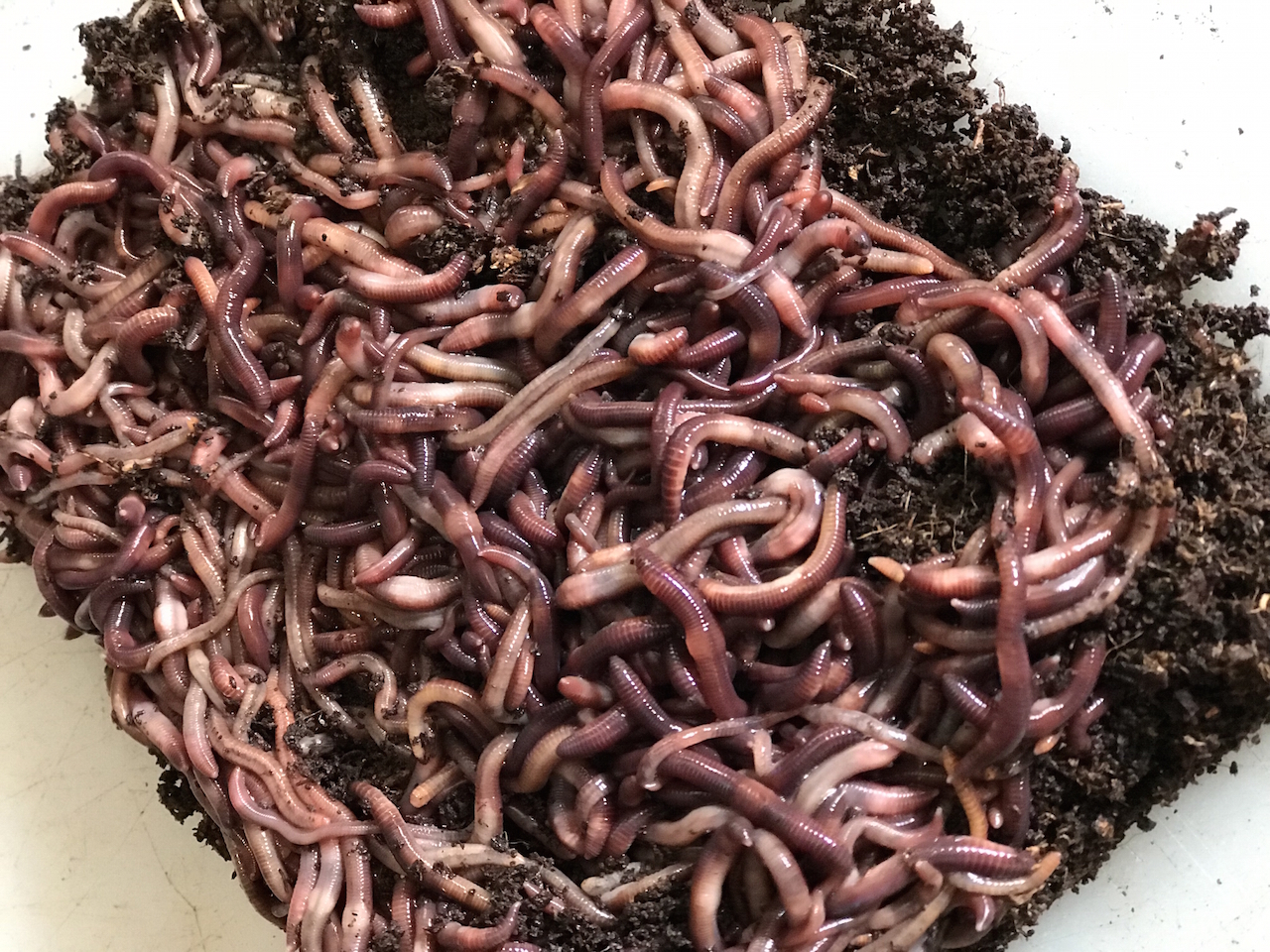The Function of Red Wigglers in Sustainable Horticulture
The assimilation of red wigglers right into lasting gardening practices supplies an engaging technique to enhancing soil wellness and lowering organic waste. These microorganisms not just convert kitchen area scraps into nutrient-dense compost through vermicomposting but additionally freshen the soil, advertising optimal conditions for plant development. As they break down complex natural materials, they proactively promote a flourishing microbial ecosystem essential for lasting agriculture. The ramifications of making use of red wigglers extend past mere composting; their function in forming a more lasting future warrants a deeper exploration of their advantages and practical applications.
Recognizing Red Wigglers
Red wigglers, scientifically referred to as Eisenia fetida, are a types of earthworm renowned for their duty in sustainable gardening and composting methods - red wigglers. These worms prosper in decomposing raw material, making them especially reliable in transforming cooking area scraps and yard waste into nutrient-rich compost. Unlike standard earthworms, red wigglers have a greater resistance for differing moisture levels and can thrive in atmospheres with bountiful natural material
(NC Worm Farms)Typically, red wigglers are smaller than their earthworm equivalents, normally measuring in between 3 to 4 inches in size. They possess a reddish-brown pigmentation and have a fractional body structure that assists in their burrowing and feeding activities. These organisms are hermaphroditic, suggesting each private possesses both male and women reproductive organs, which permits for effective populace development under optimal problems.
The habitat choices of red wigglers consist of damp, dark environments abundant in organic material, such as compost containers or worm farms. Their eco-friendly role prolongs past composting; they are essential in aerating the dirt and helping with vitamins and mineral cycling, which eventually adds to healthier yard communities. red wigglers. Recognizing the biology and behavior of red wigglers is necessary for those looking for to execute reliable vermicomposting in lasting horticulture
Benefits of Vermicomposting
Vermicomposting deals numerous benefits that boost lasting horticulture methods and add to ecological health. One of the key benefits is the improvement of natural waste right into nutrient-rich compost, which improves soil framework and fertility. The spreadings generated by red wigglers are packed with useful microbes and essential nutrients, making them an outstanding natural plant food.
In addition, vermicomposting dramatically reduces landfill waste. By diverting kitchen area scraps and lawn waste from garbage dumps, this method not just lessens methane exhausts-- a powerful greenhouse gas-- yet additionally advertises a round economy, where waste is repurposed as a resource.
Another advantage is the improvement of dirt oygenation and water drainage (red wigglers). The burrowing task of red wigglers develops networks in the soil, enabling air and water to permeate more easily, thus fostering a healthier origin system for plants
In addition, vermicomposting can be done on a tiny range, making it easily accessible for metropolitan garden enthusiasts and those with restricted area. This technique motivates environmental stewardship and awareness, as individuals become extra involved with their waste monitoring techniques. Eventually, vermicomposting represents a sustainable, reliable, and eco-friendly strategy to horticulture that profits both plants and the world.
How to Start Vermicomposting
Beginning your very own vermicomposting system can be a fulfilling venture that improves your sustainable horticulture methods. To begin, choose a suitable container, such as a plastic container or wooden box, with excellent drain and ventilation. The dimension will certainly depend upon the volume of kitchen scraps you generate; a bin of 10-14 gallons generally suffices for a family.
Next, prepare the bed linens material. Shredded newspaper, cardboard, and coconut coir are superb choices, offering a comfy habitat for the red wigglers. Aim for a bedding deepness of regarding 4-6 inches, which ought to be wet however not soggy.
When the bedding is developed, introduce your worms. Red wigglers (Eisenia fetida) are one of the most appropriate for composting. Start with about one extra pound of worms for every 2-3 extra pounds of kitchen scraps weekly.
Begin including kitchen waste, avoiding meat, milk, and oily foods, as these can draw in pests and produce odors. Routinely check the container's moisture degrees and temperature, ensuring it stays within the perfect variety for worm task. With these initial steps, you'll be well on your means to creating nutrient-rich compost for your garden.
Keeping a Healthy Worm Bin
A thriving worm bin needs constant care and interest to preserve an ideal atmosphere for the red wigglers. Trick factors to keep More about the author an eye on consist of dampness degrees, temperature, and food supply. Maintaining a wetness level similar to a wrung-out sponge is critical; excessive water can result in anaerobic conditions, while insufficient can dehydrate the worms.
Temperature is likewise important, as red wigglers grow in a series of 55 to 77 levels Fahrenheit. Severe temperature levels can emphasize the worms, potentially leading to mortality. Therefore, placing the bin in a climate-controlled area or using insulating materials can help regulate temperature level variations.

Last but not least, oygenation is vital. Regularly transforming the bedding and making use of a fork or shovel can avoid compaction and advertise air flow, guaranteeing a healthy and balanced, successful environment for the red wigglers. By sticking to these practices, garden enthusiasts can preserve an effective worm bin that sustains sustainable horticulture efforts.
Influence on Soil Wellness
Enhancing soil wellness through the usage of red wigglers is a fundamental facet of sustainable horticulture. By taking in natural issue, red wigglers damage down complex products into less complex substances, a process recognized as vermicomposting.

(red wigglers eisenia fetida)Researches have actually revealed that soils enhanced with worm spreadings exhibit increased microbial activity and improved fertility, causing greater plant yields. By integrating red wigglers right into gardening techniques, gardeners not just enrich their dirt yet additionally add to a more lasting agricultural system, emphasizing the interconnectedness of soil health and ecological stewardship.

Verdict
To conclude, red wigglers substantially add to sustainable horticulture via their effective vermicomposting practices. Their capacity to transform organic waste right into nutrient-rich compost boosts soil fertility and sustains a diverse microbial ecological community. Their burrowing task boosts soil aeration and water retention, benefiting plant health. By promoting waste decrease and promoting a circular economy, red wigglers become crucial elements in environment-friendly gardening campaigns, emphasizing their important role in ecological sustainability.